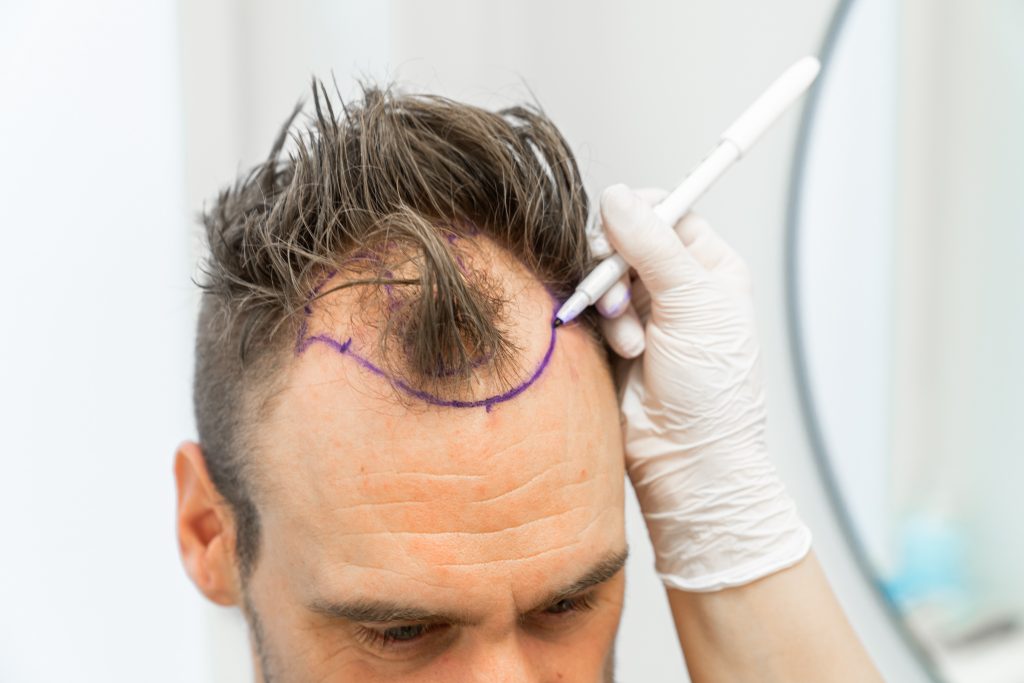
Articles
What could the future of hair transplantation look like?
Technological advances in hair transplantation are constantly taking place. Everything from robotic surgery to cloning has emerged as relevant options in the field. Although the majority of these sciences are speculative, they have great potential.
Read on to learn what the future of hair transplants may look like.
Robot surgery
Robotic surgery is not as futuristic as cloning and gene therapy. ARTAS är namnet på ett robotsystem som idag kan utföra extraheringen och införandet av hårsäckar – helt per automatik.
The system is an automated method that uses specialised technology to perform the hair transplant. Technically, ARTAS is not a surgical procedure and is considered minimally invasive.
The system requires neither the surgical removal of a donor area (FUT) nor the skill of a specialist who extracts and implants individual hair follicle groups by hand. The entire process – from consultationto insertion of the hair follicles – is carried out with the help of ARTAS.
The process
During the consultation, ARTAS creates a simulation of what your hairlinewill look like after surgery. The system then scans your brain. Using a built-in camera system and algorithmic software, ARTAS can identify hair follicle groups suitable for transplantation.
The sophisticated technology also calculates the position of the hair and head every 20 milliseconds to ensure optimal precision. After the extraction is completed, ARTAS uses the simulations it created during the consultation to place the hair follicles in the recipient area.
In theory, ARTAS reduces the risk of human error and improves the precision of the procedure. More precise extraction and placement also leads to a shortened healing process and less scarring.
With that said said, the system is still in its development phase. It takes a team of trained surgeons to ensure that the work is done correctly and that the result is 100% natural. Thus, ARTAS is a slower process with a higher cost than a manual intervention.
Everyone is different and technology cannot replace how a human mind deals with the potential problems that may arise.
Gene therapy
Gene therapy could theoretically introduce new DNA into a hair cell. In this way, it is hoped to prevent the cell from being affected by DHT(dihydrotestosterone).
DHT is a steroid hormone that is essential for the growth of body and facial hair in men. DHT, on the other hand, reduces the size of the hair follicles later in life, which in turn leads to hair loss.
Scientists have discovered that a gene called WNT has a regenerative ability. WNT is involved in the healing process of wounds. By manipulating the said gene, it has been possible to stimulate the creation of “new” skin that has the same characteristics (e.g. hair follicles, glands, appearance) as normal skin.
The idea is that introducing this gene to hair cells could create new hair follicles in the desired area. Alternatively, it could create resistance in hair follicles that have been, or will be, affected by DHT.
Cloning
Cloning is an advanced technology that has been talked about in everything from movies to other media for a long time. However, we have made significant progress in this area in recent years. The theory in question is based on the ability to multiply cells in a laboratory environment.
When it comes to “hair cloning”, the idea is the same – you isolate a group of hair cells and reproduce them in a lab. They would then be transferred to the surface of the person where you want to create new hair growth.
Once in place, the cell will naturally divide to produce new hair follicles, which in turn generate hair. Research has found that a single transplant using this method has been able to produce several thousand new hairs.
However, a number of problems remain in this currently theoretical technique. We must realize that we have years of research ahead of us before this technology would even be applicable, and years more before it would be acceptable for medical, safety and clinical purposes.



